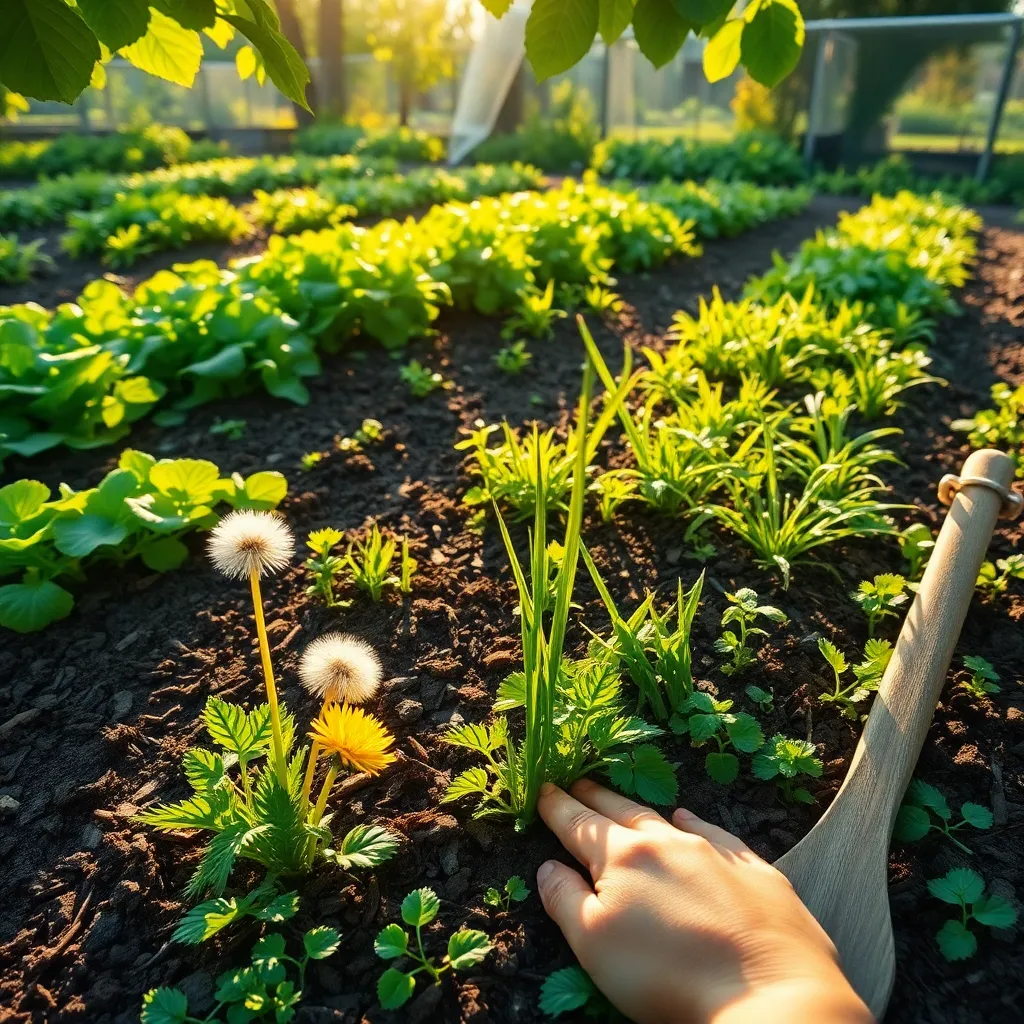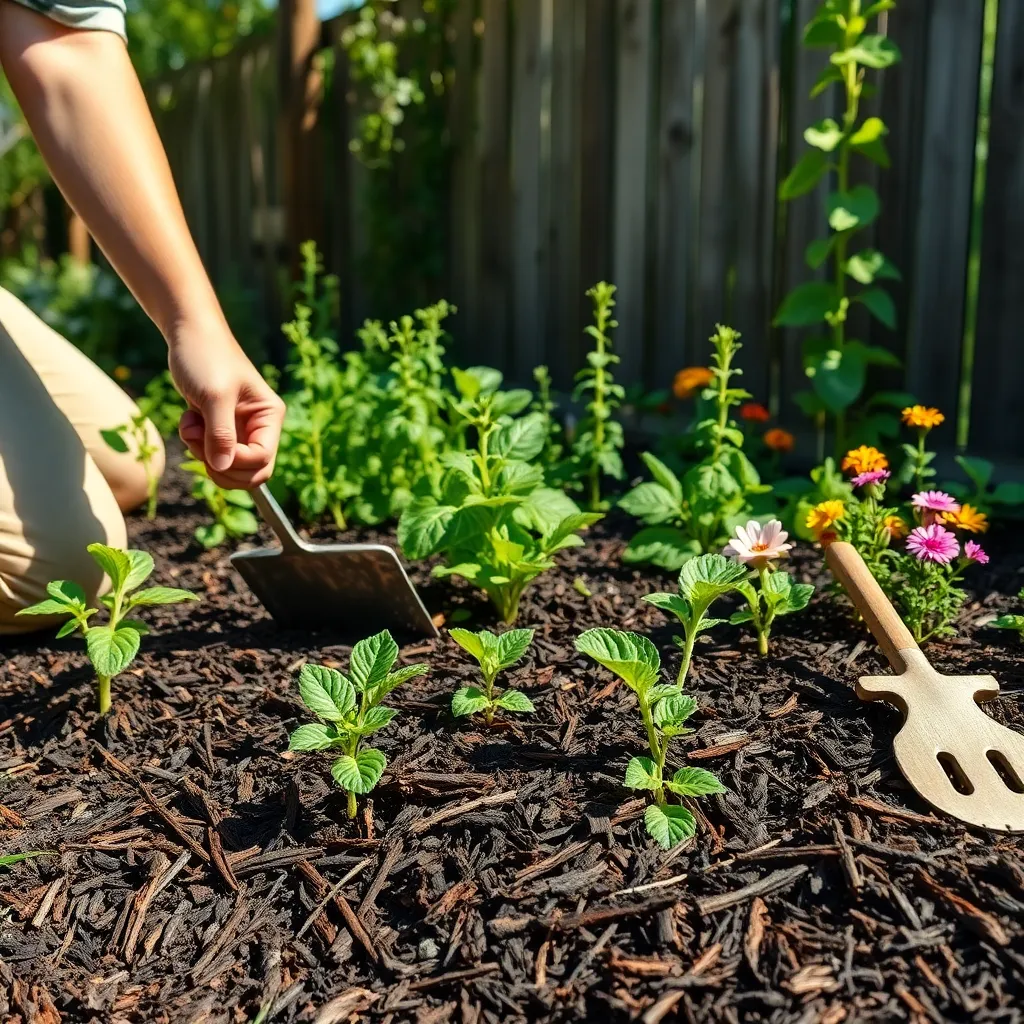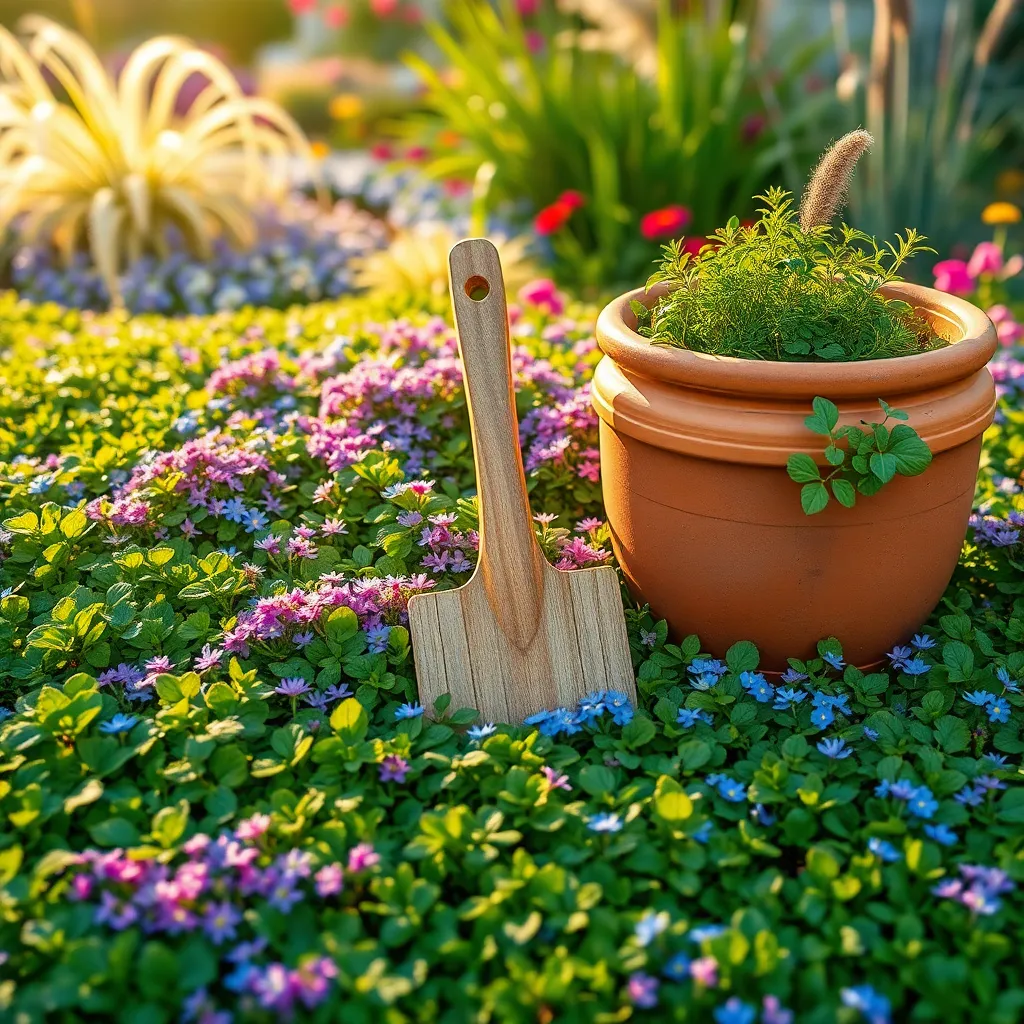Imagine stepping into your garden, where every plant thrives in harmony, unbothered by pesky intruders. Whether you’re nurturing your first vegetable patch or maintaining a seasoned perennial border, weeds can often feel like relentless foes. These opportunistic plants not only compete for vital nutrients and sunlight but can also detract from the beauty and productivity of your cherished green space. Fear not, for controlling weeds naturally is not only achievable but can also enhance your connection with the earth.
In this article, we’ll explore effective, eco-friendly strategies that respect both your plants and the planet. You’ll learn how to harness the power of organic mulch, strategic planting, and simple homemade remedies to keep those unwelcome guests at bay. For beginners, we’ll demystify the basics of weed control, providing you with simple, actionable tips to get started. Meanwhile, seasoned gardeners will discover fresh insights and innovative techniques to enhance their existing practices.
Embracing natural weed control methods means working with nature, not against it, fostering a garden that’s as kind to the environment as it is to the eyes. By the end of this journey, you’ll feel empowered to turn your garden into a thriving, weed-free paradise using methods that are safe, sustainable, and satisfying. So, roll up your sleeves and prepare to dig deep into the art of natural weed management—your garden will thank you for it!
Identify Common Weed Types

Weeds can be a gardener’s nemesis, but understanding their types makes management easier. **Broadleaf weeds**, like dandelions and clover, are easily identified by their wide leaves and tend to thrive in nutrient-rich soils.
Grassy weeds, such as crabgrass, resemble grass and often invade lawns with poor maintenance. To control these, regular mowing and proper lawn care, including aeration and overseeding, can be effective.
Sedge weeds, like nutsedge, are distinguishable by their triangular stems and thrive in moist, compacted soils. Improving soil drainage and reducing overwatering can help keep these weeds at bay.
For those dealing with perennial weeds like bindweed, persistence is key since they can regrow from fragments left in the soil. Regularly pulling them out by the roots and using mulch to block sunlight are effective natural control methods.
Mulch to Suppress Growth

Mulching is an effective strategy to naturally suppress weed growth in your garden. By covering the soil with a layer of mulch, you limit sunlight access, which is crucial for weed seed germination.
Choose organic mulches like straw, wood chips, or shredded leaves for a dual purpose: weed suppression and soil enrichment. These materials decompose over time, adding nutrients back into the soil, making them a sustainable choice for both beginners and experienced gardeners.
For best results, apply a layer of mulch that is at least two to three inches thick. This depth is necessary to effectively block light and prevent weed seeds from sprouting, especially during the growing season.
Keep the mulch away from plant stems and trunks to reduce the risk of rot and disease. This tip is essential for maintaining plant health, particularly in damp climates where moisture retention could lead to problems.
Advanced gardeners might consider using landscape fabric under the mulch for additional control in severely weed-prone areas. This method provides a physical barrier, enhancing the mulch’s effectiveness while still allowing water and nutrients to reach the soil.
Hand-Pull Weeds Regularly

Regular hand-pulling of weeds is a simple yet effective way to maintain a healthy garden. By removing weeds before they flower and set seed, you can prevent them from multiplying and spreading further.
For best results, aim to pull weeds after a rain when the soil is moist, as this makes it easier to remove the roots completely. If the soil is dry, consider watering the area lightly before pulling to loosen the soil and help the roots come out intact.
When hand-pulling, ensure you grasp the weed close to the base to remove the entire root system. This is crucial because leaving any part of the root in the ground can allow the weed to regrow.
Beginner gardeners should focus on identifying common weeds like dandelions and crabgrass, which are easier to spot and remove. Experienced gardeners might recognize trickier weeds, such as bindweed, which require more persistence and attention.
To make hand-pulling less of a chore, incorporate it into your routine by spending a few minutes each week in the garden. Consistency is key to keeping weed populations under control and ensuring your plants have access to vital nutrients and sunlight.
Utilize Natural Weed Barriers

Natural weed barriers can be a gardener’s best friend in the fight against unwanted plants. By using organic materials like mulch, straw, or wood chips, you can effectively smother weeds while nourishing your soil. Mulching not only helps to suppress weeds but also retains soil moisture, reducing the need for frequent watering. Choose mulches that are suitable for your climate and plant types, such as bark for perennials or straw for vegetable gardens.
Another effective method is using cover crops, which can outcompete weeds and improve soil fertility. Plants like clover, rye, or vetch can be sown in fallow areas to create a dense ground cover. Cover crops not only suppress weeds by denying them sunlight but also add valuable nutrients back into the soil when tilled under. This technique is particularly beneficial in larger gardens or plots that are resting between growing seasons.
For a more permanent solution, consider installing landscape fabric under your mulch. This fabric acts as a physical barrier, blocking sunlight and preventing weeds from germinating. Ensure that the fabric is breathable to allow water and nutrients to reach your plants’ roots. Advanced gardeners might use this technique in conjunction with drip irrigation systems to maximize efficiency in water usage.
Experiment with planting densely to create a living mulch that naturally suppresses weeds. By selecting companion plants that thrive together, you can create a thriving ecosystem that leaves little room for weeds to take hold. This approach not only reduces weed growth but also enhances biodiversity, attracting beneficial insects and improving overall plant health. With these natural barriers, you can enjoy a lush garden with minimal weed invasion and chemical use.
Introduce Beneficial Ground Covers

Ground covers are a fantastic way to naturally control weeds while enhancing the beauty of your garden. These low-growing plants effectively compete with weeds for sunlight, water, and nutrients, reducing the space and resources available for weed growth.
Consider planting creeping thyme, which thrives in well-drained soil and full sun. This aromatic herb not only suppresses weeds but also adds a delightful fragrance and blooms with tiny purple flowers in the summer.
For shaded areas, sweet woodruff is an excellent choice, flourishing in moist, well-drained soil. Its delicate white flowers and lush green foliage will brighten shaded spots while outcompeting weeds for vital resources.
More advanced gardeners might experiment with using clover as a ground cover, which not only controls weeds but also enriches the soil by fixing nitrogen. Regular mowing and occasional watering during dry spells can keep clover healthy and productive, benefiting the overall garden ecosystem.
Conclusion: Growing Success with These Plants
In navigating the lush garden of relationships, we’ve explored five key concepts to naturally manage the weeds of discord: active listening, empathy, setting boundaries, mutual respect, and ongoing communication. Each of these pillars plays a vital role in cultivating a flourishing partnership. By actively listening, you tune into your partner’s needs; through empathy, you foster deeper connections; setting boundaries ensures respect and safety; mutual respect forms a solid foundation; and ongoing communication keeps love thriving.
As an immediate next step, take a moment today to practice active listening in your next conversation. Notice the difference it makes when you truly hear your partner.
Remember, the journey of nurturing a relationship is ongoing. Save or bookmark this article as a valuable resource in your relationship toolkit. With these insights at your fingertips, you’re well-equipped to navigate challenges and cultivate a resilient bond.
Looking ahead, embrace the promise of relationship success by implementing these natural strategies. As you do, you pave the way for a vibrant, enduring partnership that stands the test of time. Your garden of love awaits—tend to it with care.
